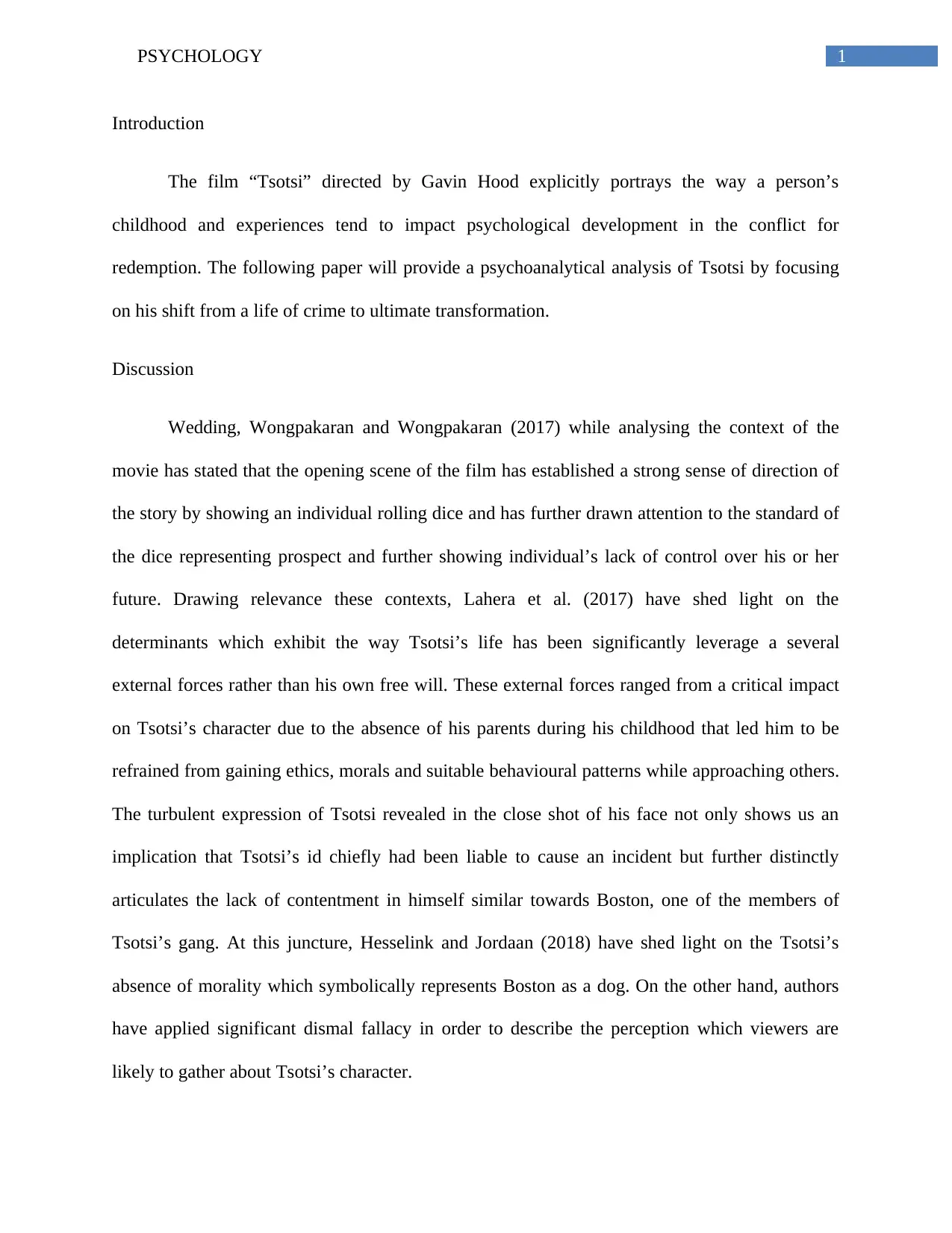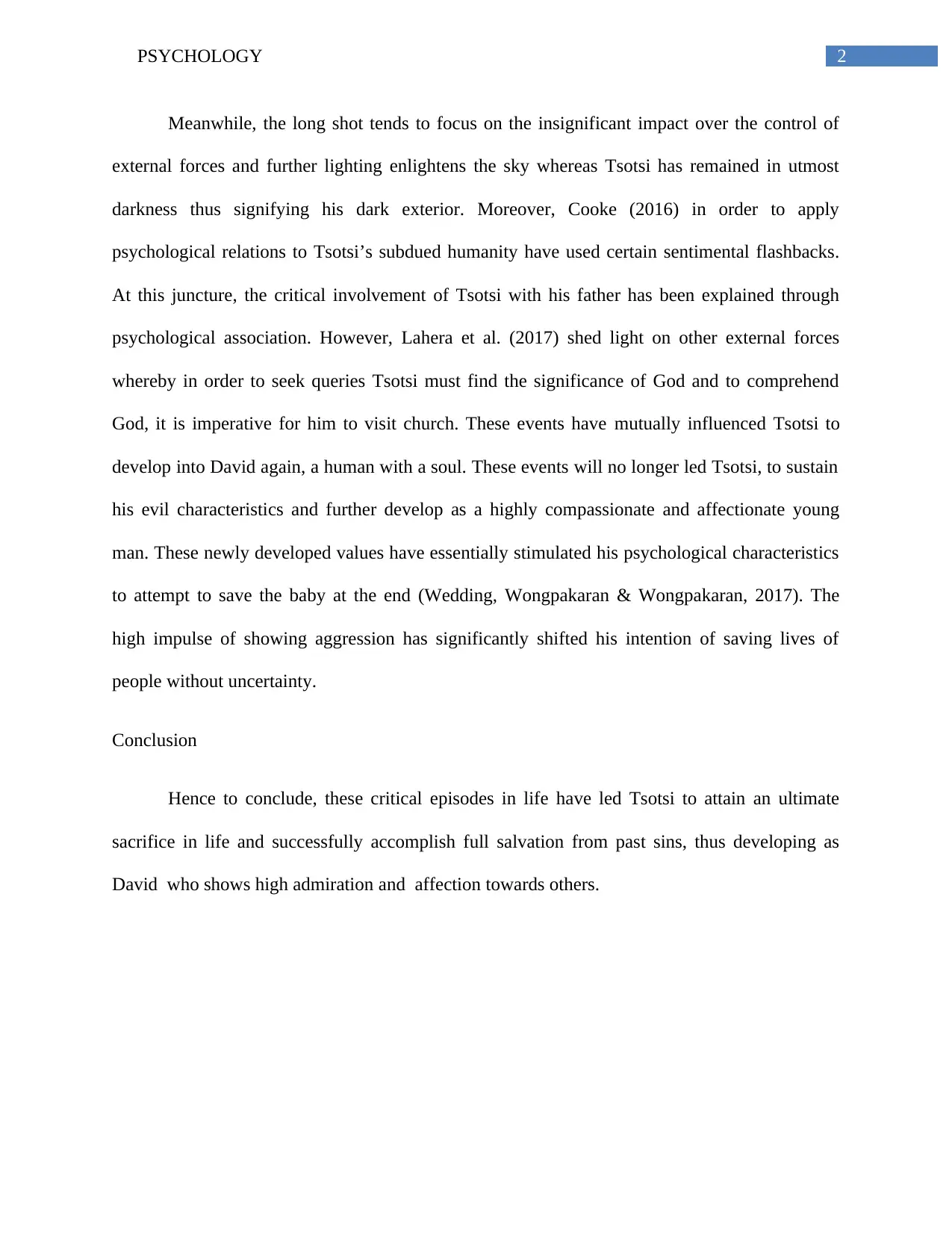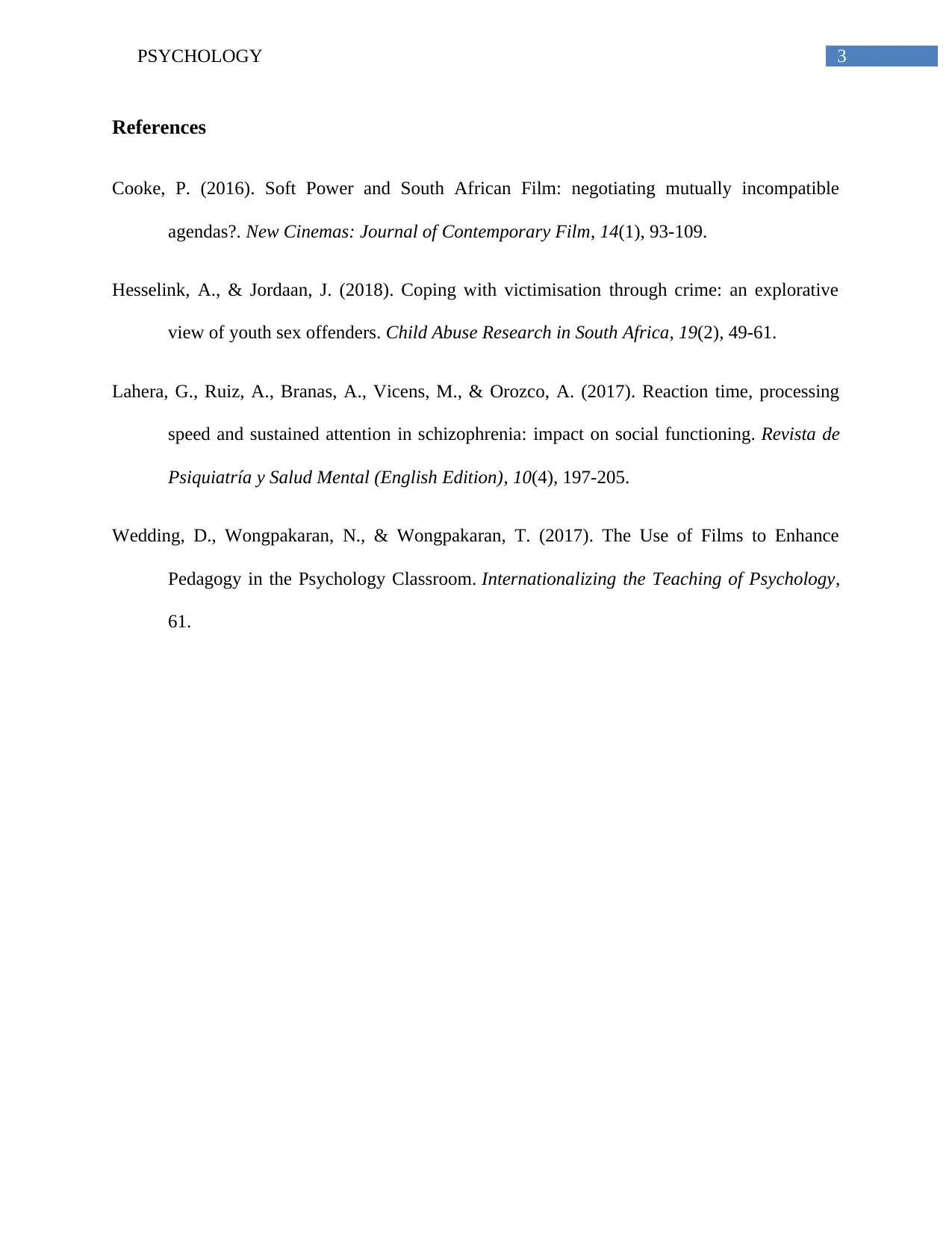Psychological Development and Redemption: Analyzing the Film Tsotsi
VerifiedAdded on 2023/01/23
|4
|773
|47
Essay
AI Summary
This essay offers a psychoanalytical examination of the film 'Tsotsi,' exploring the protagonist's transformation from a life of crime to redemption. The analysis delves into the impact of childhood experiences, the influence of external forces, and the protagonist's evolving psychological state. The paper discusses key scenes, such as the opening dice scene, and the significance of flashbacks, examining how these elements contribute to the character's moral and emotional development. The analysis incorporates insights from various sources, including Wedding, Wongpakaran, and Wongpakaran (2017), Lahera et al. (2017), Hesselink and Jordaan (2018), and Cooke (2016), to provide a comprehensive understanding of Tsotsi's psychological journey and ultimate sacrifice.
1 out of 4






![[object Object]](/_next/static/media/star-bottom.7253800d.svg)